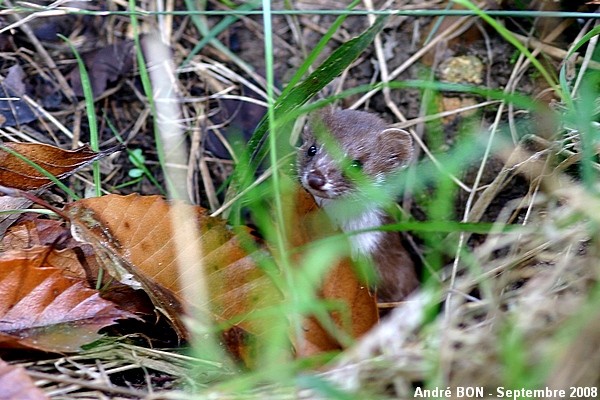
| Least Weasel (Mustela nivalis (Linnaeus, 1766)) |

|
|
Scientific name: Mustela nivalis (Linnaeus, 1766) Common name: Least Weasel French name: Belette d'Europe Family: Mustelidae Size: Size: 17 to 27 cm, males are larger than females. Weight: 125g for males, 65g for females. Biotope: Various habitats like meadows, cultivated areas and woodlands. Food: Mainly small rodents (especially Voles), captured by the ease to warm its way inside their burrows. The Least Weasel may also feed on birds and amphibians. Longevity : 8 years. Geographic area: Europe and Asia east to Himalaya. North Africa. Introduced to New Zeeland. |
The Least Weasel is the smallest carnivorous mammal in Europe. It has a slender body, brown on the upper side and white on the under side. There is a possible confusion with the Stoat (Mustela erminea). The Stoat is slightly larger. It has a longer tail with a black tip. The separation between the brown colour and the white colour is less sharp and more wavy on the Least Weasel. The Least Weasel's fur does not turn to white in winter. There can be two litters of 4 to 9 young per year. The Least weasel cannot stay very long without feeding. Populations are dependent of the abundance of preys. |
| [To know more about the Least Weasel] [Top] |

|
We were two photographers during this photo session around the ponds. After having seen this Least Weasel, we have positioned ourselves to prevent it to quickly escape and to shoot a few pictures. Then we have walked away not to disturb it during a too long time and letting it going on hunting for its survival. |